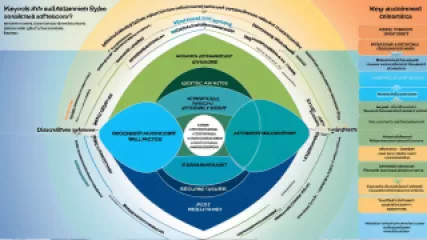Understanding Adult Attachment Styles: A Research Summary
Understanding Adult Attachment Styles: A Research Summary
Attachment theory, initially developed by John Bowlby and Mary Ainsworth, has emerged as a crucial framework for understanding human relationships and emotional development across the lifespan. While much of the early research on attachment focused on parent-child relationships, the application of attachment theory to adult romantic relationships has garnered significant attention in recent decades.
In this comprehensive research summary, we will explore the various attachment styles that have been identified in adults, the factors that contribute to the development of these styles, and the implications of attachment styles for individual well-being and the quality of adult relationships.
The Origins of Adult Attachment Styles
Attachment styles in adulthood are believed to have their roots in the early attachment relationships established during childhood. According to attachment theory, the quality of the bond between a child and their primary caregiver(s) shapes the child's expectations and behaviors in subsequent close relationships.
Bowlby's seminal work on attachment theory proposed that children develop internal working models, or mental representations, of themselves and their caregivers based on their early experiences. These internal working models then guide the individual's approach to and expectations of close relationships throughout their life.
Ainsworth's research on the Strange Situation procedure identified three primary attachment styles in children: secure, anxious-ambivalent, and avoidant. These attachment styles have been found to have parallels in adult romantic relationships, as described by the work of researchers such as Cindy Hazan and Phillip Shaver.
Types of Attachment Styles in Adults
Building upon the foundational work of Bowlby and Ainsworth, researchers have identified four primary attachment styles in adults:
Secure Attachment
Individuals with a secure attachment style tend to have a positive view of themselves and others, and they are comfortable with intimacy and interdependence in their relationships. They are able to rely on their partners for support and affection, and they are also able to provide support and affection in return. Secure individuals are generally able to navigate conflicts and stressors in their relationships in a constructive manner.
Anxious-Preoccupied Attachment
Individuals with an anxious-preoccupied attachment style often have a negative view of themselves and a positive view of others. They may be preoccupied with their relationships and have a strong desire for closeness and intimacy, but they may also experience high levels of anxiety and insecurity in their relationships. These individuals may seek excessive reassurance from their partners and may have difficulty regulating their emotions.
Dismissive-Avoidant Attachment
Individuals with a dismissive-avoidant attachment style tend to have a positive view of themselves and a negative view of others. They may be uncomfortable with intimacy and interdependence in their relationships, and they may prefer to maintain emotional distance from their partners. Dismissive-avoidant individuals may have difficulty expressing their emotions and may be reluctant to seek support from their partners.
Fearful-Avoidant Attachment
Individuals with a fearful-avoidant attachment style have a negative view of both themselves and others. They may desire close relationships but also fear intimacy and vulnerability. Fearful-avoidant individuals may experience significant anxiety and discomfort in their relationships, and they may have difficulty trusting their partners and maintaining stable, satisfying relationships.
Factors Contributing to Adult Attachment Styles
The development of adult attachment styles is influenced by a complex interplay of factors, including:
Early Childhood Experiences
As mentioned earlier, the quality of an individual's early attachment relationships with their primary caregivers is a crucial factor in the development of their attachment style. Secure attachment is typically associated with caregivers who are responsive, sensitive, and available to their children, while insecure attachment styles (anxious, avoidant, and fearful) are often the result of inconsistent, neglectful, or abusive caregiving.
Genetic and Biological Factors
Research suggests that there may be genetic and biological components that contribute to individual differences in attachment styles. For example, studies have found that certain genetic variations and neurobiological factors, such as the functioning of the oxytocin and dopamine systems, may be associated with attachment-related behaviors and emotions.
Relational Experiences
Experiences in adult romantic relationships can also shape and modify an individual's attachment style. Positive, supportive, and fulfilling relationships can help to foster a secure attachment style, even in individuals who may have had insecure attachments in childhood. Conversely, negative or traumatic experiences in adult relationships, such as betrayal, abandonment, or abuse, can reinforce or even shift an individual's attachment style towards a more insecure orientation.
Sociocultural Factors
The cultural and social contexts in which an individual is embedded can also influence the development and expression of attachment styles. Factors such as gender norms, family structures, and societal expectations around relationships can all play a role in shaping an individual's attachment-related beliefs, behaviors, and emotional responses.
The Implications of Adult Attachment Styles
The attachment styles that individuals develop in adulthood have far-reaching implications for their personal well-being, the quality of their relationships, and various aspects of their lives:
Emotional and Psychological Well-being
Attachment styles have been linked to a range of emotional and psychological outcomes. Secure attachment is generally associated with higher self-esteem, better emotion regulation, and lower levels of anxiety and depression. In contrast, insecure attachment styles, particularly the anxious and fearful-avoidant styles, are often linked to increased vulnerability to mental health issues, such as depression, anxiety, and substance abuse.
Relationship Quality and Satisfaction
Attachment styles profoundly influence the way individuals approach, perceive, and navigate their romantic relationships. Secure individuals tend to have more satisfying, stable, and mutually supportive relationships, while those with insecure attachment styles often experience more conflict, distrust, and dissatisfaction in their partnerships.
Parenting and Intergenerational Transmission of Attachment
Attachment styles can also play a role in an individual's approach to parenting and the transmission of attachment patterns across generations. Secure parents are often better able to provide the responsive, sensitive caregiving that fosters secure attachment in their children, whereas insecure parents may struggle to meet their children's attachment needs, potentially perpetuating the cycle of insecure attachment.
Professional and Academic Success
Attachment styles have also been linked to various aspects of professional and academic success. Secure individuals tend to be more resilient, adaptable, and able to effectively navigate challenges and stressors in the workplace or academic settings. In contrast, insecure attachment styles have been associated with greater difficulties in areas such as career development, academic performance, and workplace relationships.
Assessing and Understanding Your Own Attachment Style
Given the significant implications of attachment styles, it can be valuable for individuals to gain a deeper understanding of their own attachment orientation. There are several self-report measures and assessment tools available that can help individuals identify their attachment style, such as the Experiences in Close Relationships (ECR) scale and the Attachment Style Questionnaire (ASQ).
By exploring their attachment style, individuals can gain valuable insights into their relational patterns, emotional tendencies, and the underlying factors that shape their approach to close relationships. This self-awareness can then inform personal growth, relationship dynamics, and the development of more adaptive attachment-related behaviors and beliefs.
Conclusion
Attachment theory provides a comprehensive framework for understanding the complexities of adult relationships and the profound impact that early attachment experiences can have on an individual's well-being and relational functioning throughout their life. By exploring the various attachment styles and the factors that contribute to their development, we can gain valuable insights that can inform personal growth, relationship dynamics, and the pursuit of more fulfilling and satisfying connections with others.
As we continue to explore the nuances of adult attachment, the research summarized here highlights the importance of fostering secure attachment bonds, addressing insecure attachment patterns, and promoting relational skills that can enhance the quality of our close relationships and our overall well-being.






